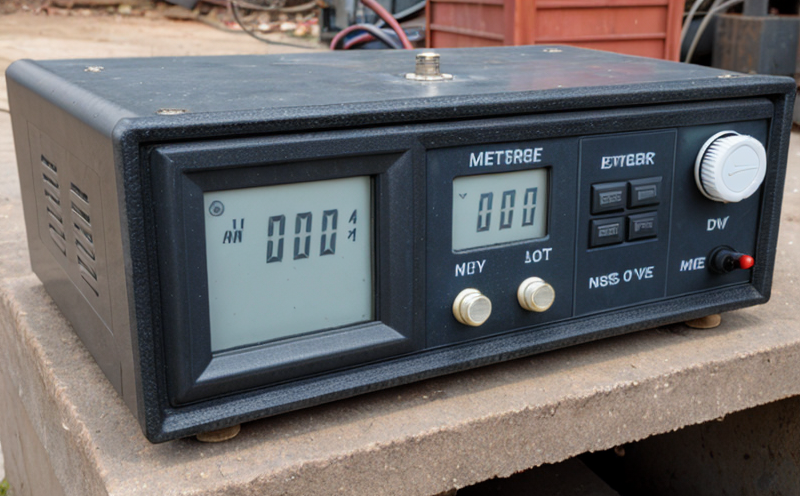Understanding Battery Self-Discharge Measurement: A Comprehensive Guide
Battery self-discharge measurement is a critical aspect of battery management and maintenance. It refers to the process of monitoring and quantifying the rate at which batteries lose their charge over time when they are not in use. This phenomenon occurs due to various factors such as chemical reactions, internal resistance, and temperature fluctuations.
Accurate measurement of battery self-discharge is essential for ensuring reliable operation, optimal performance, and prolonging the lifespan of energy storage systems. In this article, we will delve into the intricacies of battery self-discharge measurement, exploring its causes, effects, and methods for determination.
Causes of Battery Self-Discharge
Battery self-discharge is a complex process influenced by several factors, including:
Internal Resistance: Batteries have internal resistance due to various components such as electrodes, electrolytes, and separators. This internal resistance leads to energy loss and contributes to self-discharge.
Chemical Reactions: Chemical reactions within the battery, like oxidation and reduction, cause energy loss over time, leading to self-discharge.
Temperature Fluctuations: Temperature changes can affect the rate of chemical reactions, increasing or decreasing the self-discharge rate.
Effects of Battery Self-Discharge
Self-discharge has significant implications on battery performance, including:
Reduced Capacity: As batteries lose charge over time, their capacity to hold a charge is reduced.
Decreased Cycle Life: Frequent self-discharge can lead to decreased cycle life, requiring more frequent replacements.
Increased Maintenance: Regular maintenance is necessary to prevent damage and ensure reliable operation.
Methods for Battery Self-Discharge Measurement
Several methods are available for measuring battery self-discharge, including:
1.
Voltage Measurements: Monitoring the open-circuit voltage (OCV) of a battery can indicate its state of charge.
2.
Current Measurements: Measuring the current drawn by a battery under load conditions can help estimate self-discharge rates.
3.
Capacity Testing: Performing capacity tests on batteries after storage periods can determine their self-discharge rate.
Detailed Explanation of Battery Self-Discharge Measurement Methods
Method 1: Voltage Measurements
Principle: Open-circuit voltage (OCV) is a measure of the batterys state of charge. A fully charged battery will have a higher OCV than an uncharged one.
Procedure:
1. Remove the battery from its charging system and allow it to rest for several hours.
2. Measure the OCV using a multimeter or other suitable device.
3. Compare the measured OCV with the expected value for a fully charged battery.
Advantages: Non-invasive, easy to perform, and provides an indication of state of charge.
Limitations: May not accurately reflect self-discharge rates, especially in batteries with high internal resistance.
Method 2: Current Measurements
Principle: Measuring the current drawn by a battery under load conditions can help estimate self-discharge rates.
Procedure:
1. Connect the battery to a load (e.g., a resistor or a low-power device).
2. Measure the current drawn from the battery using an ammeter or other suitable device.
3. Calculate the self-discharge rate based on the measured current and storage time.
Advantages: Provides direct measurement of self-discharge, allowing for more accurate calculations.
Limitations: Requires load connection, which may affect battery operation.
Method 3: Capacity Testing
Principle: Performing capacity tests on batteries after storage periods can determine their self-discharge rate.
Procedure:
1. Remove the battery from its charging system and store it for a specified period (e.g., several weeks or months).
2. Perform a capacity test on the stored battery to measure its remaining capacity.
3. Calculate the self-discharge rate based on the measured capacity loss.
Advantages: Provides direct measurement of self-discharge, allowing for more accurate calculations.
Limitations: Requires frequent testing and can be time-consuming.
QA Section
Q: What is the effect of temperature fluctuations on battery self-discharge?
A: Temperature changes can affect the rate of chemical reactions within a battery, increasing or decreasing the self-discharge rate. Higher temperatures typically increase self-discharge rates.
Q: How often should I perform capacity tests to determine self-discharge rates?
A: The frequency of capacity tests depends on your specific application and requirements. For most cases, performing tests every 6-12 months is sufficient.
Q: Can battery self-discharge be prevented or reduced?
A: While its not possible to completely eliminate self-discharge, proper maintenance and storage can help minimize its effects. Regular charging, storing batteries in a cool dry place, and avoiding extreme temperatures can all contribute to reduced self-discharge rates.
Q: What are the implications of self-discharge on battery lifespan?
A: Frequent self-discharge can lead to decreased cycle life, requiring more frequent replacements. Its essential to monitor and manage self-discharge to ensure reliable operation and prolong the lifespan of energy storage systems.
Q: Can I use other methods for measuring battery self-discharge, such as using a battery tester or multimeter?
A: While these tools may provide some indication of state of charge or internal resistance, they are not specifically designed for self-discharge measurement. For accurate results, its recommended to use the methods described above.
Q: Can I measure self-discharge in batteries that have been previously charged and discharged multiple times?
A: Yes, you can still measure self-discharge in batteries with previous charge/discharge cycles. However, keep in mind that repeated cycling may affect the accuracy of measurements due to changes in internal resistance and chemical reactions.

































